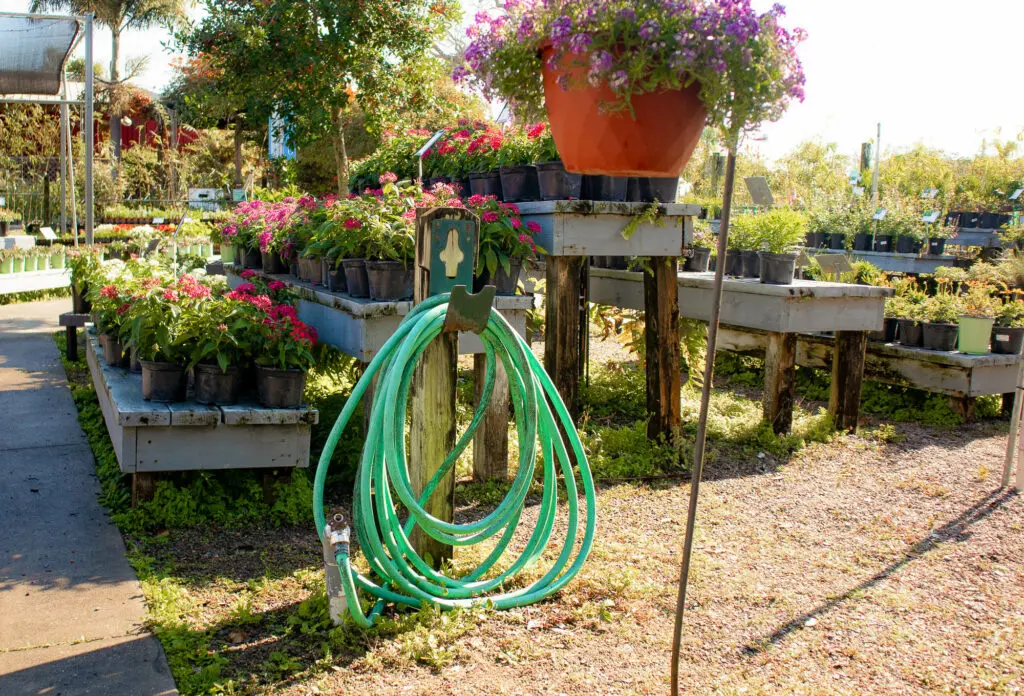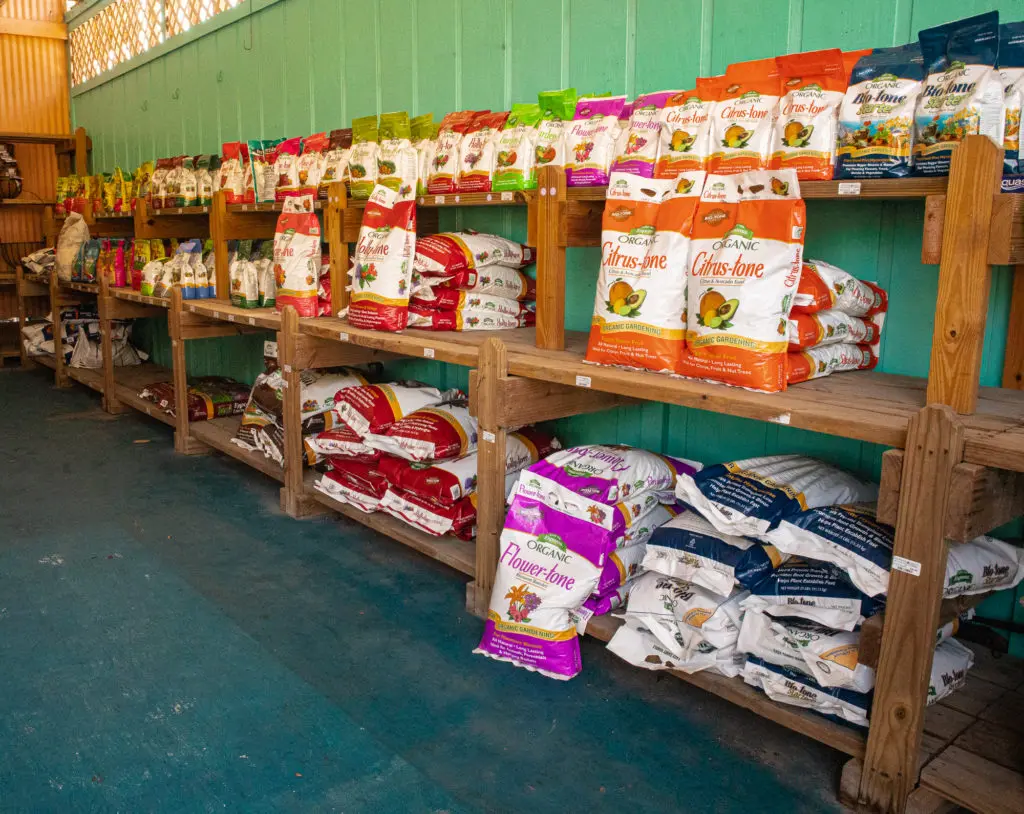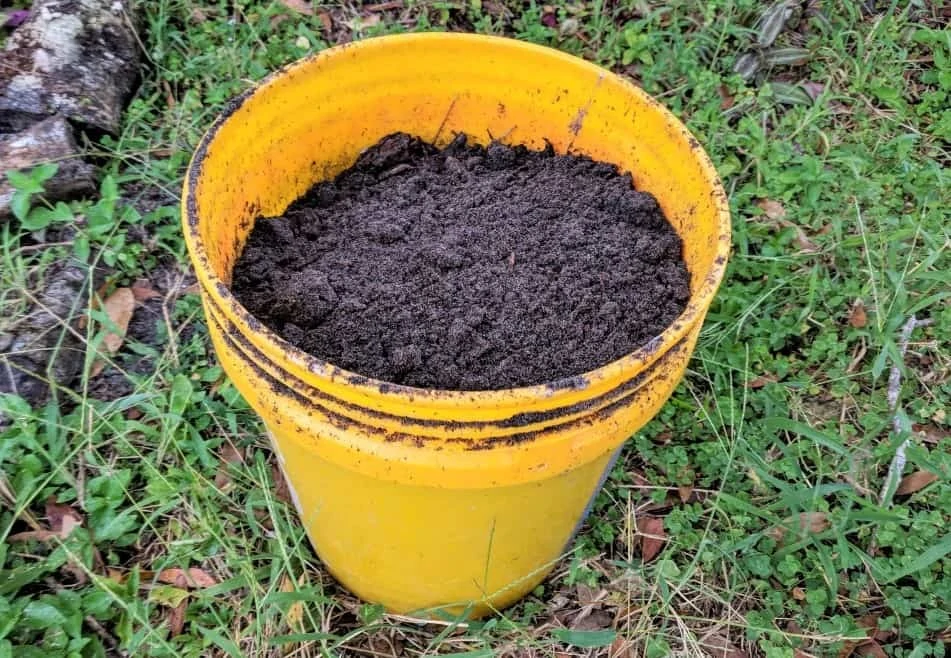By Amanda Rose Newton
As the rainy season graces Florida with its nourishing showers, gardeners have a unique opportunity to boost plant health and growth. With the recent lifting of the fertilizer ban this month, it’s the perfect time to revisit how we use fertilizers—both liquid and granular—to maintain vibrant landscapes while being environmentally conscious. This guide will delve into what liquid fertilizer is, how it works, tips for its effective use during the rainy season, understanding NPK ratios, best practices for using granular fertilizer responsibly, and exploring alternatives that focus on soil health.
What Is Liquid Fertilizer and How Does It Work?
Liquid fertilizer is a nutrient-rich solution that provides plants with essential minerals in a form that’s readily absorbed.

Unlike granular fertilizers that need to break down in the soil over time, liquid fertilizers deliver nutrients directly to plant roots or foliage, allowing for quicker uptake.
Key Benefits:
Fast Absorption: Immediate availability of nutrients to plants.
Uniform Distribution: Easy to apply evenly across the garden.
Versatility: Suitable for both soil and foliar applications.
How It Works:
When applied, liquid fertilizer permeates the soil, reaching the root zone swiftly. In foliar feeding, plants absorb nutrients directly through their leaves. This method is especially beneficial for correcting nutrient deficiencies quickly.
Making the Most of Liquid Fertilizer in the Rainy Season
The rainy season can both aid and hinder your fertilization efforts.

Here’s how to maximize the benefits of liquid fertilizer during this time:
Timing Is Everything
Apply Between Showers: Use liquid fertilizer during periods of light rain or when a short dry spell is expected. This prevents nutrients from being washed away by heavy rains.
Early Morning Applications: Cooler temperatures reduce evaporation, ensuring more fertilizer reaches the plants.
Adjust Concentrations
Dilute Appropriately: Excessively concentrated solutions can burn plants, especially when combined with high moisture levels.
Follow Manufacturer Guidelines: Always adhere to recommended dilution rates.
Foliar Feeding Techniques
Spray Evenly: Ensure the fertilizer covers both the upper and lower leaf surfaces
Monitor Weather Conditions: Avoid foliar applications before heavy rain to prevent wash-off.
Soil Soaking Methods
Deep Watering: Allows nutrients to penetrate deeper into the soil, reaching root systems more effectively.

Avoid Overwatering: Excess water can leach nutrients away from the root zone.
Being Conscious and Knowledgeable About NPK
Understanding the NPK ratio
The proportions of Nitrogen (N), Phosphorus (P), and Potassium (K)—is crucial for effective fertilization.
Nitrogen (N)
Purpose: Promotes leafy growth.
Signs of Deficiency: Yellowing leaves, stunted growth.
Phosphorus (P)
Purpose: Supports root development and flowering.
Signs of Deficiency: Poor root growth, delayed maturity.
Potassium (K)
Purpose: Enhances overall plant health and disease resistance.
Signs of Deficiency: Weak stems, leaf scorching.
Tips for NPK Management
Soil Testing: Conduct a soil test to determine existing nutrient levels.
Plant-Specific Needs: Different plants have varying NPK requirements. Tailor your fertilizer choice accordingly.
Avoid Over-Fertilization: Excess nutrients can harm plants and leach into waterways, causing environmental issues.
Using Granular Fertilizer Properly as the Ban Is Lifted in Florida
With the fertilizer ban lifted, it’s essential to apply granular fertilizers responsibly to protect Florida’s delicate ecosystems.
Best Practices:
1. Choose the Right Fertilizer
Slow-Release Options: These release nutrients over time, reducing the risk of runoff.

Eco-Friendly Formulas: Opt for fertilizers with lower environmental impact.
2. Proper Application Techniques
Even Distribution: Use a spreader for uniform application.
Recommended Rates: Stick to the manufacturer’s guidelines to prevent over-application.
3. Mind the Weather
Avoid Before Heavy Rains: Prevents nutrients from washing away into waterways.
Ideal Conditions: Apply during calm, dry weather with no immediate rain forecasted.
4. Buffer Zones
Keep Distance from Water Bodies: Maintain a safe margin (at least 10 feet) from lakes, rivers, streams and waterways.
Use Deflectors: When using spreaders near water, deflect fertilizer away to prevent contamination.
5. Cleanup After Application
Remove Spills: Sweep up any fertilizer on hard surfaces to prevent it from entering storm drains.
Dispose Properly: Do not wash spills into gutters or drains.
Alternatives to Synthetic Fertilizers: Focusing on Soil Health
While fertilizers can provide immediate nutrient boosts, long-term plant health depends on the vitality of the soil. Synthetic fertilizers primarily feed the plant, not the soil, potentially leading to a dependency that overlooks soil degradation. Embracing alternatives like composting enriches the soil ecosystem, promoting sustainable growth.
Benefits of Healthy Soil
Nutrient-Rich: Supports plants with a steady supply of nutrients.
Improved Structure: Enhances water retention and aeration.
Biological Diversity: Encourages beneficial microorganisms that aid plant health.
Composting
What Is Composting?
Composting is the natural process of recycling organic matter, such as leaves and food scraps, into a valuable fertilizer that can enrich soil and plants.

How to Compost:
Collect Organic Waste: Gather kitchen scraps, yard waste, and other biodegradable materials.
Layer Materials: Alternate between green (nitrogen-rich) and brown (carbon-rich) materials.
Maintain Moisture: Keep the pile moist but not soggy.
Aerate Regularly: Turn the compost to introduce oxygen, speeding up decomposition.
Use When Ready: Once the compost turns dark and crumbly, it’s ready to use.
Applying Compost:
Soil Amendment: Mix compost into the soil to improve fertility and structure.
Mulch: Spread compost around plants to retain moisture and suppress weeds.
Compost Tea: Steep compost in water to create a nutrient-rich liquid fertilizer.
Other Soil Health Practices
Cover Crops
Purpose: Grow specific plants to improve soil health during off-seasons.
Benefits: Prevent erosion, suppress weeds, and add organic matter.
Crop Rotation
Purpose: Change the type of plants grown in a particular area each season.
Benefits: Reduces pest and disease buildup, balances soil nutrients.
Organic Mulches
Materials: Use straw, wood chips, or leaves.
Benefits: Conserve moisture, regulate soil temperature, and decompose into organic matter.
Why Focus on Soil Health?
Sustainable Growth: Healthy soil reduces the need for external fertilizers.
Environmental Protection: Minimizes chemical runoff into waterways.
Cost-Effective: Reduces long-term gardening expenses by decreasing fertilizer dependence.
Navigating the rainy season’s challenges and opportunities requires a thoughtful approach to fertilization. By understanding how liquid fertilizers work and applying them effectively, being mindful of NPK ratios, responsibly using granular fertilizers now that the ban is lifted, and focusing on soil health through alternatives like composting, you can foster a thriving garden while safeguarding Florida’s natural beauty.
Remember, healthy soil is the foundation of a healthy garden. While synthetic fertilizers offer quick fixes, they do not contribute to the long-term vitality of the soil. Embracing organic practices not only nurtures your plants but also the ecosystem they inhabit.


